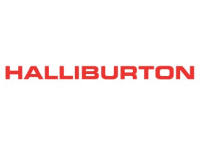Stormwater Definitions & Abbreviations
Definitions
Best Management Practices (BMP)
Schedules of activities, practices (and prohibitions of practices), structures, vegetation, maintenance procedures, and other management practices to prevent or reduce the discharge of pollutants to waters of the United States. BMPs also include treatment requirements, operating procedures, and practices to control plant site runoff, spillage or leaks, sludge or waste disposal, or drainage from raw material storage.
Clean Water Act (Water Quality Act)
Formerly the Federal Water Pollution Control Act or Federal Water Pollution Control Act Amendments of 1972. Public law 92-500; 33 U.S.C. 1251 et seq.; legislation which provides statutory authority for the NPDES program. Also known as the Federal Water Pollution Control Act.
Control Measure
Refers to any BMP or other method (including effluent limitations) used to prevent or reduce the discharge of pollutants to waters of the United States.
Conveyance
The process of water moving from one place to another.
Director
A Regional Administrator of the Environmental Protection Agency or an authorized representative.
Discharge
When used without qualification, means the “discharge of a pollutant.”
Discharge of a Pollutant
Any addition of any “pollutant” or combination of pollutants to “waters of the United States” from any “point source,” or any addition of any pollutant or combination of pollutants to the waters of the “contiguous zone” or the ocean from any point source other than a vessel or other floating craft which is being used as a means of transportation. This includes additions of pollutants into waters of the United States from: surface runoff which is collected or channeled by man; discharges through pipes, sewers, or other conveyances, leading into privately owned treatment works.
Discharge-Related Activities
Activities which cause, contribute to, or result in stormwater and allowable non-stormwater point source discharges, and measures such as the siting, construction and operation of BMPs to control, reduce, or prevent pollution in the discharges.
Erosion
When land is diminished or worn away due to wind, water, or glacial ice. Often the eroded debris (silt or sediment) becomes a pollutant via stormwater runoff. Erosion occurs naturally but can be intensified by land clearing activities such as farming, development, road-building, and timber harvesting.
Existing Discharger
An operator applying for coverage under this permit for discharges covered previously under an NPDES general or individual permit.
Excavation
The process of removing earth, stone, or other materials from land.
Facility or Activity
Any NPDES “point source” or any other facility or activity (including land or appurtenances thereto) that is subject to regulation under the NPDES program.
Federal Facility
Any buildings, installations, structures, land, public works, equipment, aircraft, vessels, and other vehicles and property, owned by, or constructed or manufactured for the purpose of leasing to, the federal government.
General Permit
A permit issued under the NPDES program to cover a certain class or category of stormwater discharges. These permits reduce the administrative burden of permitting stormwater discharges.
Grading
The cutting and/or filling of the land surface to a desired slope or elevation.
Illicit Connection
Any discharge to a municipal separate storm sewer that is not composed entirely of stormwater and is not authorized by an NPDES permit, with some exceptions (e.g., discharges due to fire fighting activities).
Impaired Water
A water is impaired if it does not meet one or more of its designated use(s). For purposes of this permit, ‘impaired’ refers to categories 4 and 5 of the five part categorization approach used for classifying the water quality standards attainment status for water segments under the TMDL program. Impaired waters compilations are also sometimes referred to as “303(d) lists”. Category 5 waters are impaired because at least one designated use is not being supported or is threatened and a TMDL is needed. Category 4 waters indicate that at least one designated use is not being supported but a TMDL is not needed (4a indicates that a TMDL has been approved or established by EPA; 4b indicates other required control measures are expected in result in the attainment of water quality standards in a reasonable period of time; and 4c indicates that the non- attainment of the water quality standard is the result of pollution (e.g. habitat) and is not caused by a pollutant. See USEPA’s 2006 Integrated Report Guidance, July 29, 2005 for more detail on the five part categorization of waters [under EPA National TMDL Guidance http://www.epa.gov/owow/tmdl/policy.html]).
Industrial Activity
The 10 categories of industrial activities included in the definition of “stormwater discharges associated with industrial activity”, as defined in CFR § 122.26(b)(14)(i)-(ix) and (xi).
Industrial Stormwater
Stormwater runoff associated with the definition of “stormwater discharges associated with industrial activity.”
Junction Manhole
For the purposes of this permit, a junction manhole is a manhole or structure with two or more inlets accepting flow from two or more MS4 alignments. Manholes with inlets solely from private storm drains, individual catch basins, or both are not considered junction manholes for these purposes.
Key Junction Manhole
For the purposes of this part, key junction manholes are those junction manholes that can represent one or more junction manholes without compromising adequate implementation of the illicit discharge program. Adequate implementation of the illicit discharge program would not be compromised if the exclusion of a particular junction manhole as a key junction manhole would not affect the permittee’s ability to determine the possible presence of an upstream illicit discharge. A permittee may exclude a junction manhole located upstream from another located in the immediate vicinity or that is serving a drainage alignment with no potential for illicit connections.
Large Municipal Separate Storm Sewer System
An MS4 located in an incorporated place or county with a population of 250,000 or more, as determined by the latest U.S. Census. Also refered to as Phase I regulated entities.
Light Manufacturing Facilities
Described under Category (xi) of the definition of “stormwater discharges associated with industrial activity.” [40 CFR 122.26(b)(14)(xi)] Under the Phase I NPDES Stormwater Program, these facilities were eligible for exemption from stormwater permitting requirements if certain areas and activities were not exposed to stormwater. As a result of the Phase II Final Rule, these facilities must now certify to a condition of no exposure.
Maximum Extent Practicable (MEP)
A standard for water quality that applies to all MS4 operators regulated under the NPDES Stormwater Program. Since no precise definition of MEP exists, it allows for maximum flexibility on the part of MS4 operators as they develop and implement their programs.
Medium Municipal Separate Storm Sewer System
MS4 located in an incorporated place or county with a population of 100,000 or more but less than 250,000, as determined by the latest U.S. Census. Also refered to as Phase I regulated entities.
Municipal Separate Storm Sewer System (MS4)
A publically-owned conveyance or system of conveyances that discharges to waters of the U.S. and is designed or used for collecting or conveying stormwater, is not a combined sewer, and is not part of a publicly-owned treatment works (POTW).
Multi-Sector General Permit (MSGP)
An NPDES permit that regulates stormwater discharges from eleven categories of industrial activities. The permitting program has been administered by the Texas Commission on Environmental Quality (TCEQ) since 2000 under the TPDES.
New Source
Any building, structure, facility, or installation from which there is or may be a “discharge of pollutants,” the construction of which commenced:
• after promulgation of standards of performance under section 306 of the CWA which are applicable to such source, or
• after proposal of standards of performance in accordance with section 306 of the CWA which are applicable to such source, but only if the standards are promulgated in accordance with section 306 within 120 days of their proposal.
New Source Performance Standards (NSPS)
Technology-based standards for facilities that qualify as new sources under 40 CFR 122.2 and 40 CFR 122.29.
No Exposure
All industrial materials or activities are protected by a storm resistant shelter to prevent exposure to rain, snow, snowmelt, and/or runoff. Industrial materials or activities include, but are not limited to, material handling equipment or activities, industrial machinery, raw materials, intermediate products, by-products, final products, or waste products. Material handling activities include the storage, loading and unloading, transportation, or conveyance of any raw material, intermediate product, final product or waste product.
Non-authorized States
Any State that does not have the authority to regulate the NPDES Stormwater Program.
Non-point Source (NPS) Pollutants
Pollutants from many diffuse sources. NPS pollution is caused by rainfall or snowmelt moving over and through the ground. As the runoff moves, it picks up and carries away natural and human-made pollutants, finally depositing them into lakes, rivers, wetlands, coastal waters, and even our underground sources of drinking water.
Notice of Intent (NOI)
An application to notify the permitting authority of a facility’s intention to be covered by a general permit; exempts a facility from having to submit an individual or group application.
NPDES
“National Pollutant Discharge Elimination System” the name of the surface water quality program authorized by Congress as part of the 1987 Clean Water Act. This is EPA’s program to control the discharge of pollutants to waters of the United States (see 40 CFR 122.2).
O&M Expenditures
The operating and maintenance costs associated with the continual workings of a project.
Outfall
The point where wastewater or drainage discharges from a sewer pipe, ditch, or other conveyance to a receiving body of water.
Owner or Operator
The owner or operator of any “facility or activity” subject to regulation under the NPDES program.
Permitting Authority (PA)
The NPDES-authorized state agency or EPA regional office that administers the NPDES Stormwater Program. PAs issue permits, provide compliance assistance, and inspect and enforce the program.
Person
An individual, association, partnership, corporation, municipality, State or Federal agency, or an agent or employee thereof.
Physically interconnected MS4
This means that one MS4 is connected to a second MS4 in such a way that it allows for direct discharges into the second system.
Point Source
Any discernible, confined, and discrete conveyance, including but not limited to any pipe, ditch, channel, tunnel, conduit, well, discrete fissure, container, rolling stock, concentrated animal feeding operation, landfill leachate collection system, vessel, or other floating craft from which pollutants are or may be discharged. This term does not include return flows from irrigated agriculture or agricultural stormwater runoff.
Point Source Pollutant
Pollutants from a single, identifiable source such as a factory or refinery.
Pollutant
Dredged spoil, solid waste, incinerator residue, filter backwash, sewage, garbage, sewage sludge, munitions, chemical wastes, biological materials, heat, wrecked or discarded equipment, rock, sand, cellar dirt, and industrial, municipal and agricultural waste discharged into water.
Pollutant Loading
The total quantity of pollutants in stormwater runoff.
Pollutant of Concern
A pollutant which causes or contributes to a violation of a water quality standard, including a pollutant which is identified as causing an impairment in a State’s 303(d) list.
Qualifying local program
A local, State or Tribal municipal stormwater management program that imposes, at a minimum, the relevant requirements of one or more of the minimum control measures includes in 122.34(b).
Regulated MS4
Any MS4 covered by the NPDES Stormwater Program (regulated small, medium, or large MS4s).
Reportable Quantity Release
A release of a hazardous substance at or above the established legal threshold that requires emergency notification. Refer to 40 CFR Parts 110, 177, and 302 for complete definitions and reportable quantities for which notification is required.
Retrofit
The modification of stormwater management systems through the construction and/or enhancement of wet ponds, wetland plantings, or other BMPs designed to improve water quality.
Runoff
Drainage or flood discharge that leaves an area as surface flow or as pipeline flow. Has reached a channel or pipeline by either surface or sub-surface routes.
Runoff Coefficient
The fraction of total rainfall that will appear at the conveyance as runoff.
Sanitary Sewer
A system of underground pipes that carries sanitary waste or process wastewater to a treatment plant.
Sediment
Soil, sand, and minerals washed from land into water, usually after rain. Sediment can destroy fish-nesting areas, clog animal habitats, and cloud waters so that sunlight does not reach aquatic plants.
Sheet Flow
The portion of precipitation that moves initially as overland flow in very shallow depths before eventually reaching a stream channel.
Significant materials
Includes, but is not limited to: raw materials; fuels; materials such as solvents, detergents, and plastic pellets; finished materials such as metallic products; raw materials used in food processing or production; hazardous substances designated under section 101(14) of CERCLA; any chemical the facility is required to report pursuant to section 313 of Title III of SARA; fertilizers; pesticides; and waste products such as ashes, slag and sludge that have the potential to be released with stormwater discharges.
Site Plan
A graphical representation of a layout of buildings and facilities on a parcel of land.
Site Runoff
Any drainage or flood discharge that is released from a specified area.
Small Municipal Separate Storm Sewer System
Means all separate storm sewer systems that are (i) owned or operated by the United States, a State, city, town, borough, county, parish, district, association, or other public body (created by or pursuant to State law) having jurisdiction over disposal of sewage, industrial wastes, storm water, or other wastes, including special districts under State law such as a sewer district, flood control district, or drainage district, or similar entity or an Indian tribe or an authorized Indian tribal organization or a designated and approved management agency under section 208 of the CWA that discharges to waters of the United States. (ii) Not defined as “large” or “medium” municipal separate storm sewer system pursuant to paragraphs 40 CFR 122.26 (b)(4) and (b)(7), or designated under paragraph 40 126.26(a) (1)(v). (iii) This term includes systems similar to separate storm sewer systems in municipalities, such as systems at military bases, large hospital or prison complexes, and highways and other thoroughfares. This term does not include separate storm sewers in very discrete areas, such as individual buildings.
Small MS4
Means a small municipal separate storm sewer system.
Stakeholder
An entity that holds a special interest in an issue or program — such as the stormwater program — since it is or may be affected by it.
Standard Industrial Classification (SIC) Code
A four digit number which is used to identify various types of industries.
Storm Drain
A slotted opening leading to an underground pipe or an open ditch for carrying surface runoff.
Stormwater
Stormwater runoff, snow melt runoff, and surface runoff and drainage.
Stormwater Discharges Associated with Construction Activity
A discharge of pollutants in stormwater runoff from areas where soil disturbing activities (e.g., clearing, grading, or excavating), construction materials, or equipment storage or maintenance (e.g., fill piles, borrow areas, concrete truck washout, fueling), or other industrial stormwater directly related to the construction process (e.g., concrete or asphalt batch plants) are located. (See 40 CFR 122.26(b)(14)(x) and 40 CFR 122.26(b)(15).
Stormwater Discharges Associated with Industrial Activity
The discharge from any conveyance that is used for collecting and conveying stormwater and that is directly related to manufacturing, processing or raw materials storage areas at an industrial plant. The term does not include discharges from facilities or activities excluded from the NPDES program under Part 122. For the categories of industries identified in this section, the term includes, but is not limited to, stormwater discharges from industrial plant yards; immediate access roads and rail lines used or traveled by carriers of raw materials, manufactured products, waste material, or by-products used or created by the facility; material handling sites; refuse sites; sites used for the application or disposal of process waste waters (as defined at part 401 of this chapter); sites used for the storage and maintenance of material handling equipment; sites used for residual treatment, storage, or disposal; shipping and receiving areas; manufacturing buildings; storage areas (including tank farms) for raw materials, and intermediate and final products; and areas where industrial activity has taken place in the past and significant materials remain and are exposed to stormwater. For the purposes of this paragraph, material handling activities include storage, loading and unloading, transportation, or conveyance of any raw material, intermediate product, final product, by-product or waste product. The term excludes areas located on plant lands separate from the plant’s industrial activities, such as office buildings and accompanying parking lots as long as the drainage from the excluded areas is not mixed with stormwater drained from the above described areas. Industrial facilities include those that are federally, State, or municipally owned or operated that meet the description of the facilities listed in Appendix D of this permit. The term also includes those facilities designated under the provisions of 40 CFR 122.26(a)(1)(v).
Stormwater Management
Functions associated with planning, designing, constructing, maintaining, financing, and regulating the facilities (both constructed and natural) that collect, store, control, and/or convey stormwater.
Stormwater Pollution Prevention Plan (SWPPP or SWP3)
A plan to describe a process whereby a facility thoroughly evaluates potential pollutant sources at a site and selects and implements appropriate measures designed to prevent or control the discharge of pollutants in stormwater runoff.
Surface Water
Water that remains on the surface of the ground, including rivers, lakes, reservoirs, streams, wetlands, impoundments, seas, estuaries, etc.
Total Maximum Daily Loads (TMDLs)
A TMDL is a calculation of the maximum amount of a pollutant that a waterbody can receive and still meet water quality standards, and an allocation of that amount to the pollutant’s sources. A TMDL includes wasteload allocations (WLAs) for point source discharges; load allocations (LAs) for nonpoint sources and/or natural background, and must include a margin of safety (MOS) and account for seasonal variations. (See section 303(d) of the Clean Water Act and 40 CFR §130.2 and §130.7).
Tool Box
A term to describe the activities and materials that EPA plans to perform/produce to facilitate implementation of the stormwater program in an effective and cost-efficient manner. The eight components include: 1)fact sheets; 2) guidance documents; 3) menu of BMPs; 4) compliance assistance; 5) information clearing house; 6) training and outreach efforts; 7) technical research; and 8) support for demonstration projects.
Urbanized Area (UA)
A Bureau of the Census determination of a central place (or places) and the adjacent densely settled surrounding territory that together have a minimum residential population of 50,000 people and a minimum average density of 1,000 people/square mile. This is a simplified definition of a UA, the full definition is very complex.
Urban Runoff
Stormwater from urban areas, which tends to contain heavy concentrations of pollutants from urban activities.
Watershed
That geographical area which drains to a specified point on a water course, usually a confluence of streams or rivers (also known as drainage area, catchment, or river basin).
Wet Weather Flows
Water entering storm drains during rainstorms/wet weather events.
Water Quality Impaired
See ‘Impaired Water’.
Water Quality Standards
A water quality standard defines the water quality goals of a water body, or portion thereof, by designating the use or uses to be made of the water and by setting criteria necessary to protect the uses. States and EPA adopt WQS to protect public health or welfare, enhance the quality of water and serve the purposes of the Clean Water Act (See CWA sections 101(a)2 and 303(c)).
Acronyms and Other Abbreviations
A | B | C | D | E | F | G | H | I |J | K | L | MN | O | P | Q | R| S | T | U | V | W | X | Y | Z
Numbers
305(b)
Section of the Clean Water Act that calls for a biennial assessment of surface water Quality in Texas
305(d)
Section of Clean Water Act that includes impaired water bodies in category 5
40 CFR 60
Title 40, Code of Federal Regulations, Part 60
Symbols
°C
temperature degrees Celsius
°F
temperature degrees Fahrenheit
°K
temperature degrees Kelvin
A
AA
atomic absorption
AAS
atomic absorption spectrometry
AASHTO
American Association of State Highway and Transportation Officials
AC
Agency Communications or alternating current
ACC
annual compliance certification
ACFM
actual cubic feet per minute
ACGIH
American Conference of Governmental Industrial Hygienists
ACI
air–curtain incinerator or animal–carcass incinerator
ACIN
abatement control identification number
ACPS
application compliance plan and schedule
ACT
alternative control technique
ADA
Americans with Disabilities Act
ADMT
Air Dispersion Modeling Team
ADR
Alternative Dispute Resolution or alternate designated representative
ADSO
additional-duty safety officer
ADT
average daily traffic
AER
allowable emission rate
AERCO
Area Emission Reduction Credit Organization
AEMR
applicant emission unit monitoring requirements
AFJ
agreed final judgment
AFR
air-fuel ratio or annual financial report
AIRPR
Air Policy and Regulations
AIRS
Aerometric Information Retrieval System
ALAPCO
Association of Local Air Pollution Control Officials
ALPM
actual liters per minute
AMOC
alternate methods of control
AOI
area of impact
AOL
alternate opacity limit
AOR
alternate opacity request
AOS
alternative operating scenario
AP-42
compilation of air pollutant emission factors
APA
Administrative Procedures Act
APD
Air Permits Division
API
American Petroleum Institute
APIRT
Air Permits Initial Review Team
APTRA
Administrative Procedures and Texas Register Act
APWL
Air Pollutant Watch List
AQ
Air Quality
AQAC
Air Quality Advisory Committee
AQCR
air quality control region
AQMP
Air Quality Modeling Procedures
AQP
Air Quality Planning
AQP&A
Air Quality Planning and Assessment
ARACT
alternate RACT
ARD
acid rain data
AREACIRC
co-located circular area source
ARP
Acid Rain Program
ARPA
Agricultural Resources Protection Authority
As
arsenic
ASA
air stagnation advisory
ASAE
American Society of Agricultural Engineers
ASC
Administrative Services Coordinator
ASDWA
Association of State Drinking Water Administrators
ASR
aquifer storage and retrieval
AST
aboveground storage tank
ASTM
American Society for Testing and Materials
ASTSWMO
Association of State and Territorial Solid Waste Management Officials
ATRV
air toxics response vehicle
ATSDR
Agency for Toxic Substances and Disease Registry
Auto-GC
Automated Gas Chromatograph
AVO
average vehicle occupancy
AWMA
Air and Waste Management Association
B
BACM
best available control measures
BACT
best available control technology
BAE
baseline actual emissions
BAQC
Bureau of Air Quality Control (City of Houston)
BAR
Bureau of Automotive Repair
BART
Bay Area Rapid Transit (in San Francisco)
BART
Best Available Retrofit Technology
bbl
barrel
bbl/day
barrel(s) per day
BCs
boundary conditions
BECC
Border Environment Cooperation Commission
BEG
Bureau of Economic Geology (UT Austin)
BHP
brake horsepower
BIBI
benthic index of biotic integrity
BIF
boilers and industrial furnaces
BMPs
best management practices
BPA
Beaumont/Port Arthur
BTEX
benzene, toluene, ethyl benzene, and xylene
Btu
British thermal units
Btu/scf
British thermal units per standard cubic foot/feet
C
C
centigrade
C/C
Combustion (and) Coatings (Section)
C2H4O
ethylene oxide
C2H6
ethane
C3H8
propane
CAA
Clean Air Act
CAAA
Clean Air Act Amendments
CAFO
concentrated animal-feeding operation
CAIR
Clean Air Interstate Rule
CAIR2
Clean Air Interstate Rule; Phase 2
CAM
compliance-assurance monitoring
CAMR
Clean Air Mercury Rule
CAMS
continuous-air monitoring station
CAMx
Comprehensive Air Model with Extensions
CAP
Capacity Assurance Plan or Compliance Advisory Panel (Small Business and Local Government Assistance)
CAPCO
Capital Area Council of Governments
CARB
California Air Resources Board
CARE
clean air responsibility enterprise committee
CAS
carbon adsorption system
CATOX
catalytic oxidation unit
CAUSE
Citizens Allied and United for a Safe Environment
CBBEP
Coastal Bend Bays and Estuaries Program
CB05
Carbon Bond Mechanism Version 05
CBIV
Carbon Bond Mechanism Version IV
cc
cubic centimeter
CC
Corpus Christi
CCEDS
Consolidated Compliance and Enforcement Data System
CCH
contested case hearing
CCIP
Comprehensive Compliance Inspection Protocol
CCMP
Comprehensive Conservation and Management Plan
CCN
certificate of convenience and necessity
CCO
Chief Clerk’s Office
CDBGP
Community Development Block Grant Program
CDC
Centers for Disease Control and Prevention
CDS
Compliance Data System
CEIS
Computerized Emissions Inventory System
CEMS
Continuous Emission Monitoring System
CENRAP/RPO
Central Region Air Program/Regional Planning Organization
CERCLA
Comprehensive Environmental Responsibility, Compensation and Liability Act
cf/day
cubic foot or feet per day
CFC
chlorofluorocarbon
cfm
cubic foot or feet per minute
CFR
Code of Federal Regulations
CGA
cylinder gas audit
CH4
methane
CIN
control equipment identification number
CISWI
commercial and industrial solid-waste incineration
Cl2
chlorine
CMA
Chemical Manufacturers Association
CMP
(Texas) Coastal Management Plan
CMSA
consolidated metropolitan statistical area
CN
customer identification number
CNG
compressed natural gas
CO
carbon monoxide
CO2
carbon dioxide
COG
Council of Governments
COH
coefficient of haze
COMM
Commissioners
COMS
continuous opacity-monitoring system
CONTOP
continuous smelting-top blowing
CORE
control-operations review and evaluation
COS
carbonyl sulfide
CPI
consumer price index
CPMS
continuous parametric monitoring system
CPP
continuing planning process
CR
Central Registry
CRO
certification by responsible official
CRP
Clean Rivers Program
CS2
carbon disulfide
CRWR
Center for Research and Water Resources (UT Austin)
CSGWPP
Comprehensive State Groundwater Protection Program
CSI
Common Sense Initiative
CSR
Center for Space Research (UT Austin)
CT
cooling towers
CTG
Control Techniques Guidelines
CWA
Clean Water Act
CWS
commissioners’ work session
D
DAC
debutanized aromatic concentrate
DAR
duly authorized representative
DART
Dallas Area Rapid Transit
DE
destruction efficiency
DEA
diethanolamine
DERC
discrete emission-reduction credit
DFW
Dallas/Fort Worth (Metroplex)
DGA
diglycolamine
DIPA
disopropylamine
DIR
Department of Information Resources
DMRG
Data Management Reference Guide
DO
dissolved oxygen
DOC
Department of Commerce
DOD
Department of Defense
DOE
Department of Energy
DOJ
Department of Justice
DOPA
Dairy Outreach Program Area
DOT
Department of Transportation
DPM
digital panel meter
DR
designated representative
DPS
Department of Public Safety
DRE
destruction and removal efficiency
dscf
dry standard cubic foot or feet
dscfm
dry standard cubic foot or feet per minute
dscm
dry standard cubic meters
DSHS
Department of State Health Services
DSS
decision support system
DV
design value or designated value
DVM
digital voltmeter
E
EA
environmental assessment
EC
electron capture
ECO
engineering-change order
ECOS
Environmental Council of the States
ED
(TCEQ) Executive Director
EDF
Environmental Defense Fund
EDRC
Episode Data Reporting Center
EEOC
Equal Employment Opportunity Commission
EERs
excess emission reports
EERS
Earth Electrical Resistivity Survey
EF
emissions factor
EFR
external floating roof tank
EG
emissions guidelines
EGAS
Economic Growth Analysis System
EGF
electric generating facility
EGR
exhaust-gas recirculation
EGU
electric generating unit
EI
emissions inventory
EIQ
Emissions Inventory Questionnaire
EIS
environmental impact statement
EKMA
empirical kinetic modeling approach
ELD
Environmental Law Division
ELP
El Paso
Emax
maximum (acceptable) emission (rate)
EPA
U. S. Environmental Protection Agency
EPCCHD
El Paso City-County Health District
EPN
emission point number
EPS3
Emissions Processing System Version 3
E&QA
Engineering and Quality Assurance
ERC
emission reduction credit
ERG
Eastern Research Group
ERGO
extended reports and graphic output
EROS
Earth Resources Observation System
ESAD
emission specifications for attainment demonstration
ESL
effects screening level
ESP
electrostatic precipitator
ESR
Enforcement System Review
ETA-PBL
ETA Weather Model Planetary Boundary Layer Numerical Algorithm
ETBE
ethyl tertiary-butyl ether
ETI
elapsed time indicator
ETR
employee trip reduction
EU
emission unit
EXEC
executive
F
FA
Financial Administration
FAA
Federal Aviation Administration
FAP
flexible air permit
FC
fluorocarbon
FCAA
Federal Clean Air Act
FCAAA
Federal Clean Air Act Amendments
FCCU
fluid catalytic cracking unit
FDDA
Four-Dimensional Data Assimilation
FEC
formal enforcement conference
FEMA
Federal Emergency Management Agency
FGR
flue-gas recirculation
FHWA
Federal Highway Administration
FID
flame ionization detector
FIFRA
Federal Insecticide, Fungicide, and Rodenticide Act
FIN
facility identification number
FIP
Federal Implementation Plan
FIPS
Federal Information Processing Standards
FIT
field-inspector training
FLM
Federal Land Manager
FLSA
Fair Labor Standards Act
FMLER
Flexible Membrane Liner Evaluation Report
FMVCP
Federal Motor Vehicle Control Program
FOD
Field Operations Division
FONSI
finding of no significant impact
FOP
federal operating permit
FR
Federal Register
FSR
financial status report or full-scale range
ft
foot or feet
ft/sec
foot or feet per second
FTE
full-time equivalent
G
g
gram(s)
GACT
generally achievable control technology
gal
gallon(s)
gal/wk
gallon(s) per week
gal/yr
gallon(s) per year
GAQM
guideline on air quality models
GasFindIR
GasFind infrared (camera)
GBEP
Galveston Bay Estuary Program
GBF
Galveston Bay Foundation
GC
gas chromatograph or gas chromatography
GCCES
Gulf Coast Community Exposure Study
GCCS
(municipal solid waste) gas collection and control system
GC/ITD
gas chromatography/ion trap detector
GC/MS
gas chromatography/mass spectrometry
GCPCD
Galveston County Pollution Control District
GEOS-CHEM
Goddard Earth Observing Systems Chemistry Model
GFI
ground-fault interrupter
GHP
Greater Houston Partnership
GIS
geographic information system
GLC
ground-level concentration
GLCmax
maximum (predicted) ground-level concentration
GLO
General Land Office
GloBEIS
Global Biosphere Emissions and Interactions System
GLS
ground-level sampling
GOP
General Operating Permit
gpm
gallon(s) per minute
GPS
Global Positioning System
GPSA
Gas Processors Supplier Association
GPT
gas-phase titration
gr/100scf
grain(s) per 1000 standard cubic feet
gr/dscf
grain(s) per dry standard cubic foot
GRTS
Grant Reporting and Tracking System
GWPC
Groundwater Protection Committee, Texas
H
H2CO
formaldehyde
H2S
hydrogen sulfide
H2SO4
sulfuric acid
HAN
heavy aromatic naphtha
HAP
hazardous air pollutant
HARC
Houston Advanced Research Center
HB
house bill
HBI
Hilsenhoff biotic index
HC
hydrocarbon
HCFC
hydrochlorofluorocarbon
HCl
hydrochloric acid
HCPCD
Harris County Pollution Control Department
HECT
HRVOC Emissions Cap and Trade
HEE
health effects evaluation
Hg
mercury
H-GAC
Houston-Galveston Area Council
HGACOG
Houston-Galveston Area Council of Governments
HGB
Houston-Galveston-Brazoria
HHV
higher heating value
Hi-Vol
high-volume air sampler
HMIW
hospital, medical, and infectious waste
HON
Hazardous Organics NESHAPS
HOV
high-occupancy vehicle
hp
horsepower
HQI
habitat quality index
hr
hour
HR
Human Resources
HRGC
high resolution gas chromatography
HRM
Houston Regional Monitoring Network
HRMS
high resolution mass spectrometry
HRVOC
highly reactive volatile organic compounds
HSC
Houston Ship Channel or Health and Safety Code
HSWA
Hazardous and Solid Waste Amendments (to RCRA)
HUB
Historically Underutilized Business
HVLP
high-volume, low-pressure
HW
hazardous waste
HWIR
Hazardous Waste Identification Rules
I
I&HW
industrial and hazardous waste
IBEP
Integrated Border Environmental Plan
IBI
index of biotic integrity
IBWC
International Boundary and Water Commission
IC
Interstate Compacts or ion chromatograph(y)
ICE
internal combustion engine
ICP
inductively coupled plasma
IDAC
initial demonstration of analytical capabilities
IDLH
immediate danger to life and health
IF
intergovernmental funding
IFR
internal floating roof tank
IHW
industrial and hazardous waste
ILEV
inherently low-emission vehicle
I/M
inspection/maintenance
IMS
Information Management System
in H2O
inches of water
in Hg
inches of mercury
INE
Insituto Nacional de Ecologiá
Intx
intersection
IP
inhalable particulate
IPM
Integrated Planning Model
IR
information resources or infrared
IS
information systems
ISC
industrial source complex
ISCLT
industrial source complex, long-term
<
ISCST
industrial source complex, short-term
ISCST3
industrial source complex, short-term (model)
ISO
International Standards Organization
ITD
ion-trap detector
K
kg
kilogram(s)
km
kilometer(s)
KVs
Vertical Exchange Coefficient
L
l
liter(s)
LACT
lease automatic custody transfer
LAER
lowest achievable emission rate
LAR
Legislative Appropriation Request
lb
pound(s)
lb/day
pound(s) per day
lb/hr
pound(s) per hour
lb/MMBtu
pound(s) per million British thermal units
LBB
Legislative Budget Board
LC
liquid chromatograph(y)
LCRA
Lower Colorado River Authority
LCTS
Legislative Contact Tracking System
LDAR
leak detection and repairs (Requirements)
LEV
low-emission vehicle
LHV
low heating value
LL
load losses
LNB
low-nitrogen oxides (NOx) burner
LNG
liquefied natural gas
LOE
level of effort
LOR
liquid organic reactor
LOV
letter of violation
LPG
liquefied petroleum gas
LPST
leaking petroleum storage tank
LT/D
long ton per day
LTO
landing and takeoff
LU/LC
land-use/land-cover
LUST
leaking underground storage tank
M
m
meter(s)
M
one thousand (Roman numeral) or one million
m/sec
meter(s) per second
m3
cubic meter
MACT
maximum achievable control technology
MAERT
Maximum Allowable Emission Rate Table
MBE
minority business enterprise
MCM
million cubic meters
MDEA
methyl-diethanolamine
MDERC
mobile discrete emission-reduction credit
MEA
monoethanol amine
MECA
Mercury Emissions Control Act
MECT
Mass Emissions Cap and Trade
MERA
modeling and effects review applicability
MERC
mobile emission reduction credit
MFM
mass flowmeter
mg
milligram
mg/g
millgram(s) per gram
Mg/yr
megagram(s) per year
mL
millilambert(s) or milliliter(s)
MM
million (Roman numerals)
MM5
Fifth Generation Meteorological Model
MMBtu
million British thermal units
MMBtu/hr
million British thermal units per hour
MMCFD
million cubic feet per day
MMg
million megagrams
MNSR
minor new source review
MO
Monitoring Operations
MOA
memorandum of agreement
MOSES
Mothers Organized to Stop Environmental Sins
MOU
memorandum of understanding
MPO
metropolitan planning organization
MPTER
multiple-point Gaussian dispersion algorithm with terrain adjustment
MRAP
Medical Resources Advisory Panel
MS
Mobile Source
MSA
Metropolitan Statistical Area
MSDS
Material Safety Data Sheet
MSS
maintenance, startup, and shutdown
MSW
municipal solid waste
MSWDF
municipal solid-waste-disposal facility
MSWLF
municipal solid-waste landfill
MSWRAC
Municipal Solid Waste Reduction Advisory Committee
MS/Z
multispan/zero box
MTBE
methyl tertiary-butyl ether
MUD
municipal utility district
MVVD
manual vent valve discharge
MW
megawatt
N
N2
nitrogen
NA
nonattainment
NAA
nonattainment area
NAAQS
National Ambient Air Quality Standards
NAAS
National Air Audit System
NAD Bank
North American Development Bank
NADB
National Allowance Database
NADP
National Atmospheric Deposition Program
NAFTA
North American Free Trade Agreement
NAMS
national air monitoring station
NaOH
sodium hydroxide
NAPAP
National Acid Precipitation Assessment Program
NAQTS
national air quality trend station
NAR
nonattainment review
NARMP
National Acid Rain Monitoring Program
NASA
National Aeronautics and Space Administration
NASN
National Air Surveillance Network
NCAMS
noncontinuous air-monitoring station
NCEP
National Centers for Environmental Prediction
NCP
National Contingency Plan or non-criteria pollutant
NCTCOG
North Central Texas Council of Governments
NDIR
nondispersive infrared analyzer
NEDS
National Emissions Data System
NEI
National Emissions Inventory
NEPA
National Environmental Policy Act
NEPPS
National Environmental Performance Partnership System
NESCAUM
Northeast States for Coordinated Air Use Management
NESHAP
National Emission Standards for Hazardous Air Pollutants
NGA
National Governors Association
NGL
natural gas liquids
NH3
ammonia
NIST
National Institute of Standards and Technology
NMIM
National Mobile Inventory Model
NMOC
nonmethane organic compound
NMVOC
nonmethane VOC
NNSR
nonattainment new source review
NO2
nitrogen dioxide
NOD
notice of deficiency
NOE
notice of enforcement
NOI
notice of intent
NOx
Nitrogen Oxides
NOAA
National Oceanic and Atmospheric Administration
NORM
naturally occurring radioactive material
NOV
Notice of Violation
NOY
Nitrogen Species
NPDES
National Pollutant Discharge Elimination System
NPL
National Priorities List
NPS
nonpoint source
NRCS
Natural Resource Conservation Service
NRDA
natural resource damage assessment
NSPS
New Source Performance Standards
NSF
National Science Foundation
NSR
new source review
NSRP
new source review permits
O
O2
oxygen
O3
Ozone
OA
Office of Air
OAS
Office of Administrative Services
OBD
on-board diagnostic
OCE
Office of Compliance and Enforcement
OD
outside diameter
OGS
oil and gas site
OLS
Office of Legal Services
ONRW
Outstanding National Resource Waters
OOW
Office of Waste
ORIS
Office of Regulatory Information System
OSFR
Office of State and Federal Relations
OSHA
Occupational Safety and Health Administration
OSSF
on-site sewage facility or facilities
OTA
Office of Technology Assessment
OW
Office of Water
P
P2
Pollution Prevention
PACE
People Against a Contaminated Environment
PAE
projected actual emissions
PAL
plant-wide applicability limit
PAMS
photochemical air monitoring stations
PAR
photosynthetically active solar radiation
Pb
lead
PBR
permit by rule
PCB
polychlorinated biphenyl
PCP
pollution-control project
PCS
permit-compliance system
PCV
positive crankcase ventilation
PDS
preliminary determination summary
PE
professional engineer
PEL
priority enforcement level or Priority Enforcement List (tires)
PEMS
predictive emission monitoring system
PFD
proposal for decision
PGMA
priority groundwater-management area
PHHVAS
pesticide-head high-volume air sampler
PIC
Public Interest Counsel
PID
photoionization detector
PM
particulate matter or periodic monitoring
PM10
particulate matter 10 microns or less in diameter
PM2.5
particulate matter 2.5 microns or less in diameter
PMI
preventive-maintenance instructions
PMR
pollutant mass rate
PMSA
Primary Metropolitan Statistical Area
PN
public notice
PNAP
public-notice-authorization package
POC
products of combustion
POHC
principal organic hazardous constituent
POTW
publicly owned treatment works
PPA
Pollution Prevention Act
ppb
parts per billion
ppbc
parts per billion by carbon
ppbv
parts per billion by volume
pphm
parts per hundred million
ppm
parts per million
ppmdv
parts per million by dry volume
ppmv
parts per million by volume
ppmvd
parts per million by volume, dry
PROFEPA
Procuradaria Federal para la Proteción al Ambiente
PRS
Permitting and Registration Support
PS
primary standard
PSCFv2
Potential Source Contribution Factor, version 2
PSD
prevention of significant deterioration
PSDB
point source database
PSI
pollutant standard index or pounds per square inch
psia
pounds per square inch, absolute
psig
pounds per square inch, gauge
PST
petroleum storage tank
PSTR
petroleum storage tank remediation
PTE
potential to emit
PTS
permeation-tube system
PVC
polyvinyl chloride
Q
QA
quality assurance
QC
quality control or Quality Council
R
R
Region
RA
risk assessment or relative accuracy
RAC
Research Advisory Council
RACM
reasonably available control measure
RACT
reasonably available control technology
RAM
Gaussian-plume multiple-source air quality algorithm
RATA
relative accuracy test audits
RBLC
RACT/BACT/LAER clearinghouse
RCRA
Resource Conservation and Recovery Act
RCRIS
Resource Conservation Recovery Act Information System
REMI
Regional Economic Models, Inc.
RENEW
Resource Exchange Network for Eliminating Waste
RFC
request for comments
RFP
reasonable further progress or request for proposal
RHC
reactive hydrocarbons
RI/FS
remedial investigation/feasibility study
RICE
reciprocating internal combustion engine
RIM
rule-interpretation memo
RM
reference method
RN
(regulated entity) reference number
RO
responsible official
ROG
reactive organic gas
ROM
regional oxidant model
RP
responsible party
RPR
Responsible Party Remediation
RPRC
Rule and Policy Review Committee
RR
Rule Registrations (Section)
RRC
Railroad Commission of Texas
RRF
Relative Response Factor
RRT
requirements reference table
RS
registered sanitarian
RSD
resultant standard deviation
RTC
response to comments
RTP
Regional Transportation Plan or Research Triangle Park
RVCM
residual vinyl chloride monomer
RVD
relief-valve discharge
RVP
Reid vapor pressure
RWA
receiving-water assessment
RWCD
residential wood-combustion devices
S
SABCUTS
San Antonio Bexar County Urban Transportation System
SAMWG
Standing Air Monitoring Work Group
SAPEL
Special Authorization Priority Enforcement List (tires)
SARA
Superfund Amendments and Reauthorization Act or San Antonio River Authority
SAROAD
storage and retrieval of aerometric data
SAV
site-assessment visit
SBEA
Small Business and Environmental Assistance
SBAdv
Small Business Advocate
SCAQMD
South Coast Air Quality Management District (in California)
SCC
source category code or source classification code
sccm
standard cubic centimeters per minute
scfm
standard cubic feet per minute
SCERP
Southwest Consortium on Environmental Research and Planning
scf
standard cubic foot or feet
scfh
standard cubic foot or feet per hour
scmd
standard cubic meter per day
SCR
selective catalytic reduction
SD
standard deviation
SDWA
Safe Drinking Water Act
SE
standard exemption
SEM
scanning electron microscope
SEMARNAT
Secretaría de Medio Ambiente y Recursos Naturales (in Mexico)
SFA
Stephen F. Austin State Office Building
SFIREG
State-FIFRA Issues Research and Evaluation Group
SIC
source identification code or Standard Industrial Classification
SIL
significant impact levels
SIP
State Implementation Plan
SIS
Source Investigation System
SLAMS
state and local air-monitoring station
SLER
soil-liner-evaluation report
SLPM
standard liters per minute
SLQCP
Soil Liner Quality Control Plan
SMC
significant monitoring concentration
SMP
State Management Plan
SMSA
Standard Metropolitan Statistical Area
SMSS
scheduled maintenance, startup, or shutdown (activities)
SNCR
selective noncatalytic reduction
SO2
sulfur dioxide
SO4
sulfate
SOB
statement of basis
SOCMI
synthetic organic chemical manufacturing industry
SOP
site operating permit
SOx
oxides of sulfur
SP
standard permit
SPCC
spill-prevention control and countermeasures
SPM
special-purpose monitoring
SPNSS
standards of performance for new stationary sources
SRM
standard reference material
SRU
sulfur recovery unit
SS
Support Services
SSBO
state small business ombudsman
SSI
size-selective inlet
SST
Sea Surface Temperature
STAAPA
State and Territorial Air Pollution Program Administrators
STARS
State of Texas Air Reporting System
Std
standard
STEERS
State of Texas Environmental Electronic Reporting System
SWDA
Solid Waste Disposal Act
SWP
Source Water Protection Program
SWQM
Surface Water Quality Monitoring
SWQMIS
Surface Water Quality Monitoring Information System
T
T&S
transfer and storage
TAB
Texas Association of Business
TAC
Texas Administrative Code
TAMU
Texas Agricultural and Mechanical University
TASN
Texas Air Sampling Network
TBA
tertiary-butyl alcohol
TBPC
Texas Building and Procurement Commission
TBT
tributyltin
TC
total carbon
TCAA
Texas Clean Air Act
TCC
Texas Chemical Council
TCLP
toxicity characteristic leaching procedure
TCM
Texas Climatological Model or transportation control measures
TCEQ
Texas Commission on Environmental Quality
TDoC
Texas Department of Commerce
TDF
tire-derived fuel
TEA
triethanolamine
TEM
Texas Episodic Model
TERP
Texas Emissions Reduction Program
texAER
Texas Air Emissions Repository
TexAQS II
Second Texas Air Quality Study (2006)
TEXARC
Texas Experiment in Augmenting Rainfall through Cloudseeding
TexReg
Texas Register
TGWPC
Texas Groundwater Protection Committee
THC
total hydrocarbons
THM
trihalomethane
THROX
thermal heat-recovery oxidation unit
THSC
Texas Health and Safety Code
TIP
Transportation Improvement Program
Title III
Emergency Planning and Community Right-to-Know Act of 1986
TLAP
Texas Lab Accreditation Program or Texas Land Application Permit
TLC
Texas Legislative Council
TLV
(health) threshold limit value
TMDL
total maximum daily load
TMOGA
Texas Midcontinent Oil and Gas Association
TNMHC
Total Non-Methane Hydrocarbon
TNRCC
Texas Natural Resource Conservation Commission (name changed to TCEQ in 2002)
TNRIS
Texas Natural Resources Information System
TOC
total organic carbon or total organic compounds
TOP
Texas Orthoimagery Program (DIR)
tpd
tons per day
tph
tons per hour
TPHA
Texas Public Health Association
TPS
Techncal Program Support (Section)
tpy
tons per year
TPWD
Texas Parks and Wildlife Department
TQM
total quality management
TRACS
Texas Regulatory Auditing and Compliance System
TRB
Transportation Research Board
TRI
Toxics Release Inventory
TRIS
Toxics Release Information System
TRRP
Texas Risk Reduction Program
TRS
total reduced sulfur
TRV
technical review
TS
transfer standard or (municipal solid waste) transfer station
TSCA
Toxic Substances Control Act
TSL
Texas State Library and Archives
TSP
total suspended particulate
TSS
total suspended solids
TSSWCB
Texas State Soil and Water Conservation Board
TTC
Texas Transportation Commission
TTI
Texas Transportation Institute
tvp
true vapor pressure
TWC
Texas Water Code
TWDB
Texas Water Development Board
TxDOT
Texas Department of Transportation
TxLED
Texas Low-Emission Diesel
TxREG
Texas Register
U
U/M
upset and maintenance
UA
unit attribute(s)
UAM
urban airshed model
UCR
Utility Certification and Rate Design Program
UIC
Underground Injection Control
ULEV
ultra-low-emission vehicle
UMTA
Urban Mass Transit Administration
USAS
Uniform Statewide Accounting System
USC
United States Code
USDoT
United States Department of Transportation
USEPA
United States Environmental Protection Agency
USGS
United States Geological Survey
USOMB
United States Office of Management and Budget
USSCS
United States Soil Conservation Service
UST
underground storage tank
UT-CSR
University of Texas Center for Space Research
UTM
universal transverse Mercator
V
V-B
Vasquez-Beggs correlation equation
VAC
volts, alternating current
VCU
venturi calibration unit
VDC
volts, direct current
VIN
vehicle identification number or vendor identification number
VMT
vehicle miles traveled
VOC
volatile organic compound
VR
vapor recovery
VRO
variable-resistance orifice
VRU
vapor recovery unit or system
VTCS
Vernon’s Texas Civil Statutes
W
WBE
woman-owned business enterprise
WCID
Water Control and Improvement District
WD
wind direction
WDP
working draft permit
WER
water-effects ratio
WGA
Western Governors’ Association
WHP
Wellhead Protection Program
WLE
waste-load evaluation
WMP
Waste Management Plan
WQMP
Water Quality Management Plan
WRAC
Waste Reduction Advisory Committee
WRPA
Waste Reduction Policy Act
WS
wind speed
WU
water utility or utilities











































